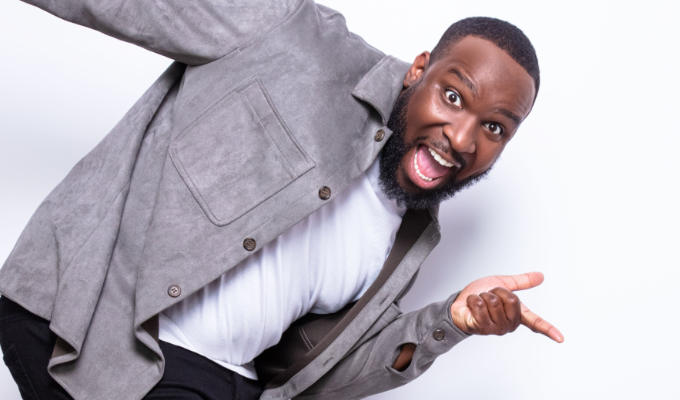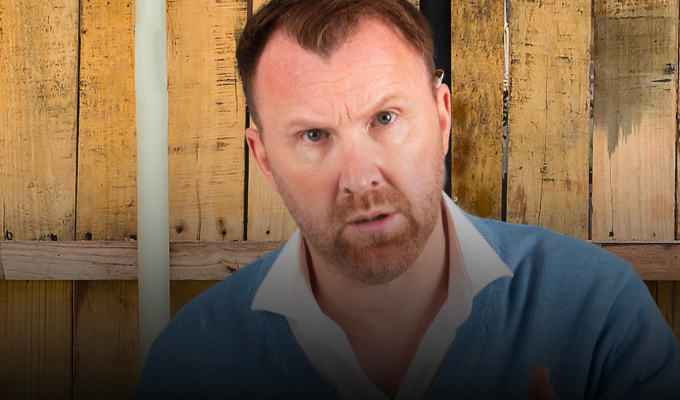Science can't explain comedy
...says a scientist who studies comedy
What's So Funny? Comedy has to be classed as an art form, because scientists cannot fully understand why humour works, a leading psychologist has said.Richard Wiseman, who has conducted research into the mechanics of comedy, admitted that determining what was funny was ‘too complex’ a question for science. ‘It’s an art,’ he said. ‘Scientists can bring something to the party, but we cannot fully explain it.’
He was talking at the day-long conference, What’s So Funny: The Languages Of Comedy, at the British Library yesterday.
Author Lucy Greaves, who co-wrote the book The Naked Jape with Jimmy Carr, also admitted: ‘As any comedian will tell you comedy is not an exact science.’
However, she offered some anthropological explanation as to why jokes work – saying the reflex act of laughter dates from early man. She gave the example of a tribesman spotting a sabre-toothed tiger and starting to shout an alert – but turning it to laughter if the predator slipped – on a banana skin, for instance – and the risk neutralised.
‘We laugh because something less serious than what we thought was going to happen occurs,’ she said. ‘Surprise is the crucial element of the joke. Set-ups establish parameters, and the punchline is like the rug being pulled out from under your feet.
She added that laughter’s roots as a form of communication is why it’s harder to chuckle alone. ‘But as soon as you’re in company, the laughter starts to bubble up and is infectious,’ she said. ‘We are communicating that all is OK and that we’re all friends.’
Wiseman said that in modern society, men more than women used gags as a way of communicating. ‘Guys tell jokes as a formulaic way of bonding,’ he said. ‘But when women laugh it tends to be anecdotally-based.
He added that: ‘Culturally, little boys show a preference for creating laughs in a way little girls don’t’ and that caused imbalances between the genders. When a man tells a joke, 70 per cent of women on average laugh, but when a woman tells a joke only 30 per cent of men laugh, And men are twice as likely to laugh at their own punchlines when telling a woman a joke, than they are when she tells him one.
Wiseman cause rumblings of descent when he cited research that suggested being funny is seen as a more desirable trait in men than it is in women, and when he said: ‘Women have more difficulty remembering jokes as it’s a form they are not used to.’
Veteran comic Barry Cryer told the audience of academics, comedians and comedy fans that he’d noticed a prejudice against women who come onto a comedy-club stage even though plenty of women were funnier than men. He cited the example of Linda Smith as being funnier than him in company or on stage.
Greaves added that gags had an important psychological role. She said: ‘In the world of a joke, everything is provisional. Everything is in two states at once. Jokes offer us a safe space in which to rehearse and accept contradictions. A tiny holiday from being sane and sensible and sober grown-ups.’
Stand-up Tim Vine agreed that writing jokes wasn’t as simple as creating a moment of surprise. ‘If there was a formula you could follow, comics wouldn’t have to go to clubs to try stuff out before going on tour,’ he said.
‘It’s a slightly mysterious process. Sometimes when I try stuff out, set-ups get a laugh and the punchline gets nothing. Then I rewrite it so it’s the other way around, and still the first bit gets a laugh.’
However, although there was no formula, he said there were techniques joke-writers use. ‘You can increase the element of surprise by keeping words in the punchline out of the set-up,’ he said.
Wiseman added that there was also empirical evidence that certain sounds, such as words starting with ‘K’, were funnier than softer ones.
Although known for his puns, Vine said there were other ways to create a surprise rather than a linguistic about-face.
‘Sometimes a comic will surprise by how outrageous a punchline is,’ he said. ‘Or sometimes simply reversing what we know to be true can be funny. For example, I have the joke, “If you cut a horse in two and bang the two halves together, it sounds like someone riding a coconut.”
Vine added that it wasn’t just the joke that is important in stand-up, but the way it’s told. ‘As well as all the technical thing, it also has to be in the right hands,’ he said. ‘It’s the singer and the song.’
Published: 19 Jan 2011






